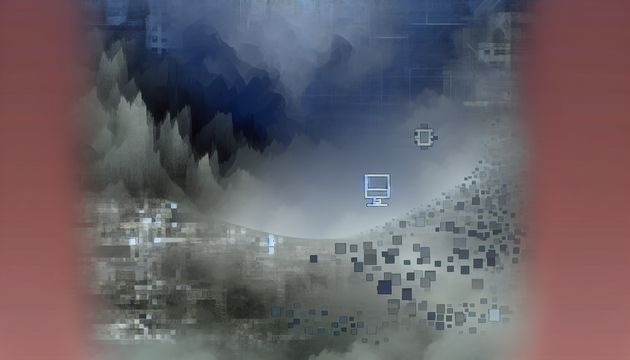
Addressing CVE-2025-31324: A Critical SAP NetWeaver Vulnerability
SAP NetWeaver, a cornerstone in enterprise software, recently faced a significant security challenge with the discovery of CVE-2025-31324. This critical vulnerability, found in the Metadata Uploader component of SAP NetWeaver Visual Composer, allows unauthenticated file uploads, posing severe risks such as remote code execution and full system compromise. With a CVSS v3 score of 10.0, the flaw underscores the potential for substantial harm to affected systems (BleepingComputer). Attackers have been observed exploiting this vulnerability to deploy web shell backdoors, facilitating remote command execution and further system compromise (Heise Online). This report delves into the nature of CVE-2025-31324, its exploitation techniques, and the urgent mitigation strategies recommended by SAP and cybersecurity experts.
Understanding CVE-2025-31324: The Vulnerability and Its Exploitation
Vulnerability Overview
CVE-2025-31324 is a critical security vulnerability identified in the SAP NetWeaver Visual Composer, specifically within the Metadata Uploader component. This flaw is characterized by an unauthenticated file upload vulnerability, which allows attackers to upload malicious executable files without requiring authentication. The vulnerability has been assigned a CVSS v3 score of 10.0, indicating its severity and potential for causing significant harm to affected systems (BleepingComputer).
The vulnerability affects the Visual Composer Framework version 7.50, and it poses a risk of remote code execution (RCE) and full system compromise. Attackers can exploit this flaw to upload arbitrary files, such as JSP webshells, to publicly accessible directories, enabling them to execute commands remotely and perform various malicious activities (Heise Online).
Exploitation Techniques
The exploitation of CVE-2025-31324 has been observed in the wild, with threat actors actively targeting vulnerable SAP NetWeaver systems. The attackers leverage the unauthenticated file upload capability to deploy web shell backdoors, which facilitate remote code execution and further system compromise. These web shells allow attackers to execute commands, manage files, and perform other malicious actions directly from a web browser (ReliaQuest).
In one reported case, attackers used the vulnerability to upload JSP webshells, enabling them to execute commands via simple GET requests. This method allowed for stealthy command execution, file management, and other malicious activities. During the post-exploitation phase, attackers deployed tools such as the “Brute Ratel” red team tool and employed techniques like “Heaven’s Gate” to bypass security measures. They also injected MSBuild-compiled code into dllhost.exe to maintain persistence and evade detection (SecurityVulnerability.io).
Mitigation Strategies
To address the critical vulnerability CVE-2025-31324, SAP has released an out-of-band emergency update, which should be applied immediately by all affected organizations. The update includes patches for this vulnerability and two additional critical vulnerabilities, CVE-2025-27429 and CVE-2025-31330, which involve code injection issues in SAP S/4HANA and SAP Landscape Transformation, respectively (BleepingComputer).
For organizations unable to apply the updates immediately, several mitigation strategies are recommended:
- Restrict Access: Limit access to the /developmentserver/metadatauploader endpoint through firewall rules to prevent unauthorized file uploads.
- Monitor Logs: Continuously monitor SAP NetWeaver logs for suspicious activities that may indicate exploitation attempts.
- Inspect for Web Shells: Regularly check directories such as servlet_jsp/irj/root/ for unauthorized files that could indicate the presence of web shells.
- Disable Visual Composer: If the Visual Composer component is not in use, consider disabling it entirely to reduce the attack surface (SensorsTechForum).
Impact on Organizations
The exploitation of CVE-2025-31324 poses significant risks to organizations using SAP NetWeaver, as it can lead to severe consequences such as system outages, degraded performance, and compromised confidentiality, integrity, and availability of critical services and applications. The vulnerability’s exploitation can result in unauthorized access to sensitive data, disruption of business operations, and potential financial and reputational damage (CVEFeed.io).
Organizations are urged to prioritize the implementation of the available security updates and mitigation strategies to protect their systems from potential exploitation. The active exploitation of this vulnerability by threat actors highlights the urgency of addressing the issue promptly to safeguard against further attacks (Onapsis).
Industry Response and Recommendations
The discovery and active exploitation of CVE-2025-31324 have prompted a swift response from the cybersecurity community and SAP. Security firms like ReliaQuest and watchTowr have reported on the vulnerability’s exploitation and provided insights into the tactics used by attackers. These firms emphasize the importance of applying the latest patches and implementing recommended mitigations to protect against exploitation (BleepingComputer).
SAP has issued a vulnerability report and released Security Note 3594142 to address the flaw, urging IT managers and administrators to take immediate action. The out-of-band update underscores the critical nature of the vulnerability and the need for organizations to remain vigilant in their security practices (Heise Online).
In conclusion, CVE-2025-31324 represents a significant threat to SAP NetWeaver systems, and its active exploitation necessitates prompt action by affected organizations. By applying the available patches and following recommended mitigation strategies, organizations can protect their systems from potential compromise and ensure the continued security and integrity of their operations.
Final Thoughts
The CVE-2025-31324 vulnerability in SAP NetWeaver highlights the ever-present challenges in cybersecurity, where even robust systems can be compromised by sophisticated attacks. The swift response from SAP, including an out-of-band emergency update, reflects the critical nature of this threat and the importance of proactive security measures (BleepingComputer). Organizations must prioritize applying these updates and consider additional mitigation strategies, such as restricting access and monitoring logs, to safeguard their systems. The active exploitation of this vulnerability serves as a stark reminder of the need for continuous vigilance and adaptation in cybersecurity practices (Onapsis).
References
- BleepingComputer. (2025). SAP fixes critical NetWeaver flaw exploited in attacks. https://www.bleepingcomputer.com/news/security/sap-fixes-critical-netweaver-flaw-exploited-in-attacks/
- Heise Online. (2025). SAP: Critical security vulnerability patched out of turn. https://www.heise.de/en/news/SAP-Critical-security-vulnerability-patched-out-of-turn-10361942.html
- ReliaQuest. (2025). SAP NetWeaver vulnerability exploitation. https://www.reliaquest.com/blog/sap-netweaver-vulnerability-exploitation/
- SecurityVulnerability.io. (2025). CVE-2025-31324. https://securityvulnerability.io/vulnerability/CVE-2025-31324
- SensorsTechForum. (2025). CVE-2025-31324 actively exploited. https://sensorstechforum.com/cve-2025-31324-actively-exploited/
- CVEFeed.io. (2025). CVE-2025-31324 vulnerability details. https://cvefeed.io/vuln/detail/CVE-2025-31324
- Onapsis. (2025). Critical SAP zero-day vulnerability under active exploitation. https://onapsis.com/event/critical-sap-zero-day-vulnerability-under-active-exploitation/



